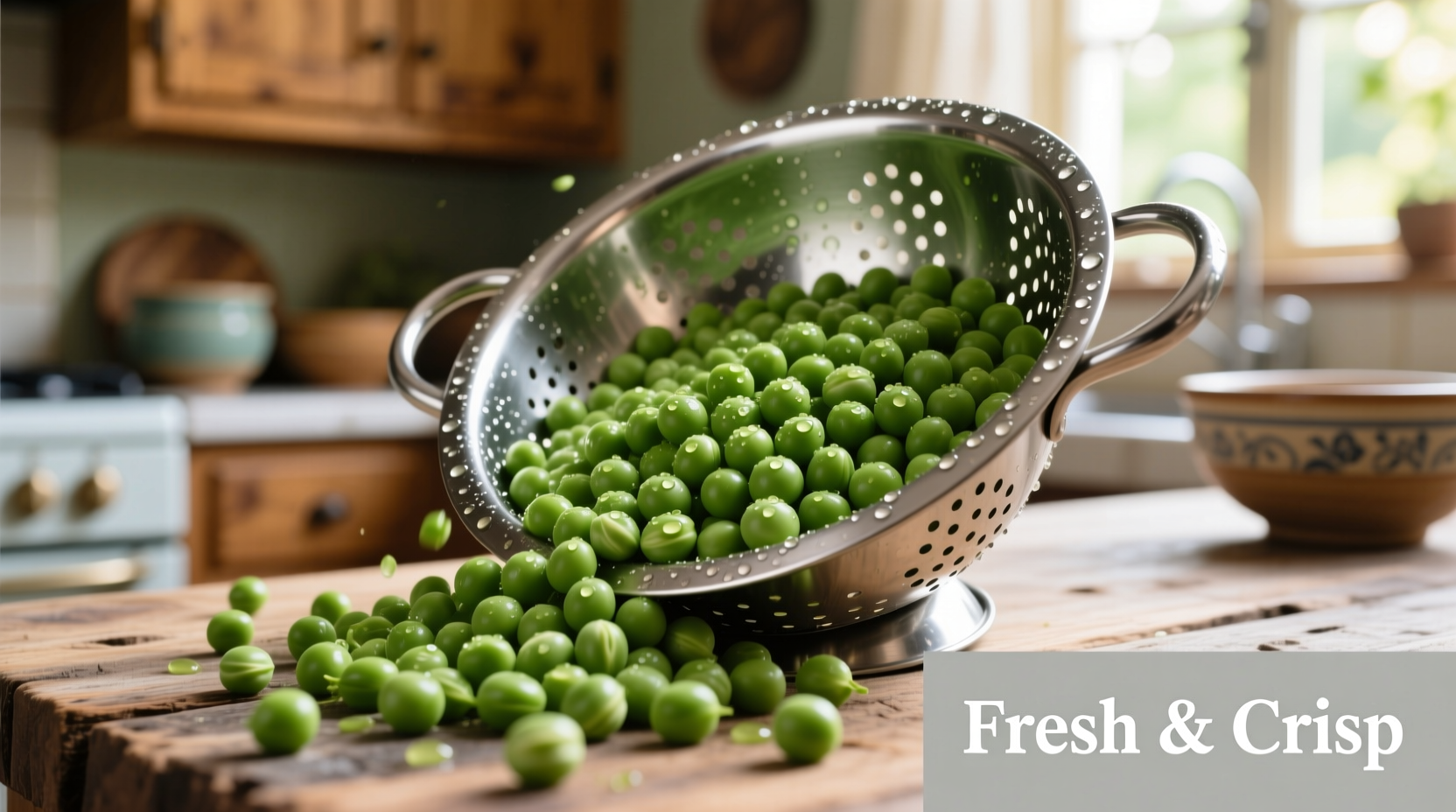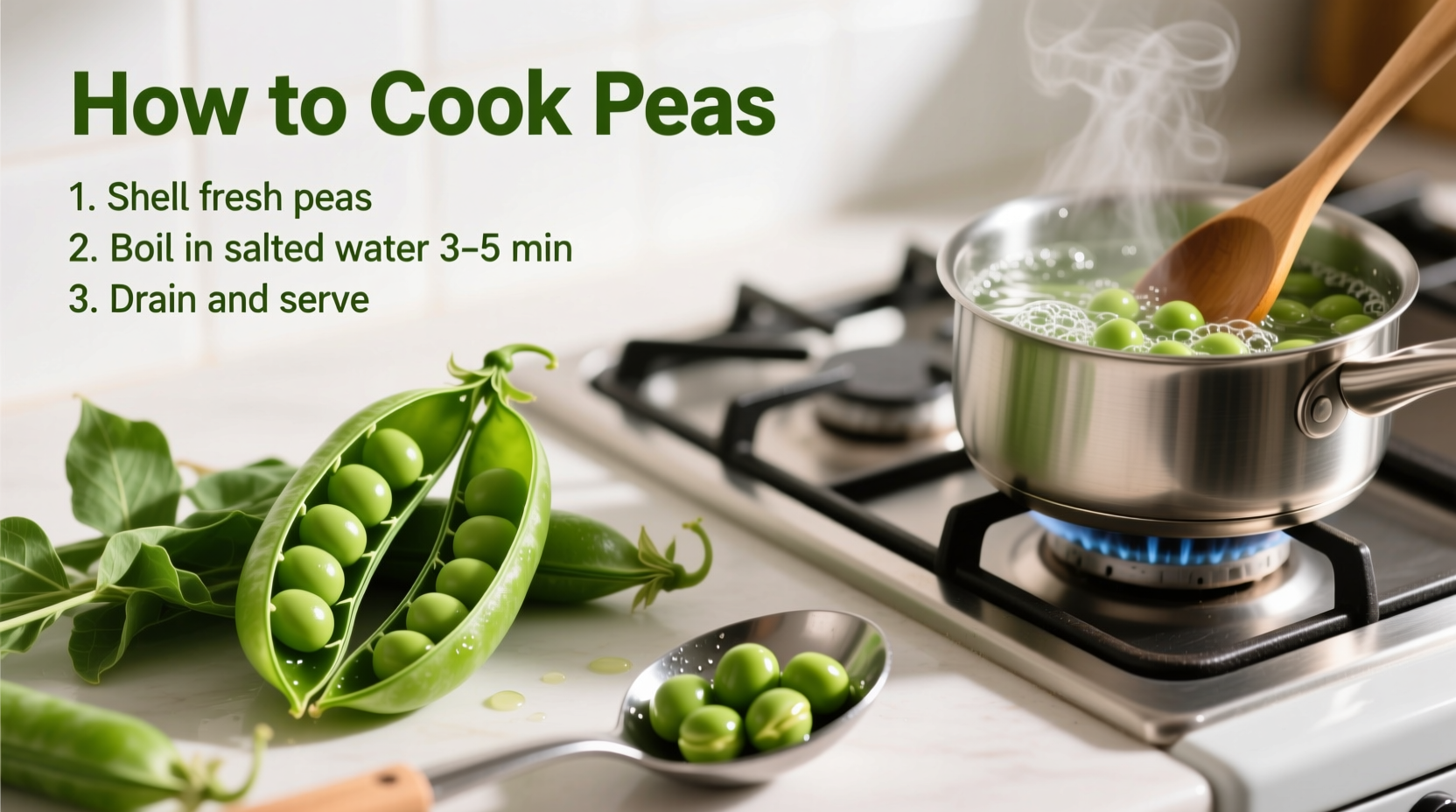Mastering how to cook peas properly transforms this humble legume from bland to brilliant. Whether you're working with fresh garden peas, convenient frozen varieties, or dried split peas, the right technique makes all the difference in texture, flavor, and nutritional value. Many home cooks overcook peas until they're mushy and lose their vibrant color and delicate sweetness. The secret lies in understanding the specific requirements for each pea type and applying precise cooking methods that maintain their natural qualities.
Understanding Pea Varieties and Their Requirements
Before you start cooking peas, recognize which variety you're working with. Fresh peas require different handling than frozen or dried options. Each type has optimal cooking times and methods that preserve their unique characteristics. Fresh peas offer the sweetest flavor when in season, while frozen peas often retain nutrients better than 'fresh' supermarket varieties that have traveled long distances. Dried peas serve completely different culinary purposes, typically used in soups and stews rather than as a side dish.
| Pea Type | Prep Required | Boiling Time | Steaming Time | Best For |
|---|---|---|---|---|
| Fresh shelled | Shell pods | 2-3 minutes | 3-4 minutes | Side dishes, salads |
| Frozen | None | 3-4 minutes | 4-5 minutes | Quick meals, stir-fries |
| Dried split | Soak overnight | 45-60 minutes | Not recommended | Soups, purees |
This cooking time reference comes from the USDA Food and Nutrition Service guidelines, which provide science-based recommendations for optimal vegetable preparation that preserves nutrients while ensuring food safety.
Essential Preparation Steps Before Cooking Peas
Proper preparation sets the stage for perfectly cooked peas. For fresh peas, remove them from their pods by pressing the seam with your thumb. Rinse shelled peas in cold water to remove any debris. While many believe adding salt to cooking water makes peas tough, research from the University of Minnesota Extension confirms this is a myth—salt actually enhances flavor without affecting texture.
When working with frozen peas, avoid thawing before cooking as this leads to waterlogged results. The flash-freezing process locks in nutrients, making frozen peas nutritionally comparable to fresh when out of season. For dried peas, thorough rinsing removes dust and potential debris. Unlike beans, most dried peas don't require soaking, though split peas cook faster when presoaked.
Step-by-Step Cooking Methods for Perfect Results
Boiling Peas: The Traditional Approach
Boiling remains the most accessible method for cooking peas. Use a ratio of 1 gallon of water to 1 pound of peas for optimal results. Bring water to a rolling boil, add peas, and immediately reduce to a gentle simmer. Overcrowding the pot lowers the water temperature and leads to uneven cooking.
For fresh peas, cook for exactly 2-3 minutes. Frozen peas need 3-4 minutes. Set a timer immediately after adding peas to water—this prevents overcooking. Test for doneness by tasting a pea; it should be tender but still have a slight bite. Drain immediately in a colander and rinse briefly with cold water to stop the cooking process and preserve vibrant color.
Steaming Peas: Preserving Maximum Nutrients
Steaming offers superior nutrient retention compared to boiling, as peas don't leach vitamins into cooking water. Place 1-2 inches of water in a pot with a steamer basket. Bring water to a boil, add peas to the basket, cover, and steam for the recommended time based on pea type.
Professional chefs prefer steaming for fresh peas because it concentrates their natural sweetness. The gentle heat prevents the peas from becoming waterlogged while maintaining their spherical shape. For best results, spread peas in a single layer in the steamer basket to ensure even exposure to steam.
Microwave Method: Quick and Convenient
The microwave provides the fastest cooking method with excellent results. Place peas in a microwave-safe dish with 2 tablespoons of water. Cover with a microwave-safe lid or plate. Cook on high for 3-4 minutes for frozen peas or 2-3 minutes for fresh peas.
This technique works particularly well for small quantities and preserves more water-soluble nutrients than boiling. The University of California Cooperative Extension confirms that microwaving vegetables with minimal water helps retain up to 90% of vitamin C, compared to 60-70% with boiling.
Pressure Cooking: For Dried Peas Only
When cooking dried peas for soups or purees, a pressure cooker significantly reduces cooking time. Rinse 1 cup dried peas and add to the cooker with 3 cups water or broth. Cook at high pressure for 15-20 minutes, followed by a natural pressure release.
This method transforms dried peas into creamy textures without hours of simmering. Unlike boiling, pressure cooking maintains more nutrients while breaking down the pea structure for smooth purees. Always check manufacturer instructions for specific timing based on your pressure cooker model.

Flavor Enhancement Techniques for Delicious Peas
Elevate your cooked peas with simple flavor combinations that complement rather than overwhelm their delicate sweetness. The culinary principle of 'less is more' applies perfectly to cooking peas. Professional chefs recommend these pairings:
- Add a small pat of butter and fresh mint immediately after cooking
- Toss with lemon zest and a squeeze of fresh lemon juice
- Combine with thinly sliced green onions and a dash of white pepper
- Mix with crumbled feta cheese and chopped fresh dill
Avoid adding acidic ingredients like vinegar or tomatoes until peas are fully cooked, as acid prevents softening and can make peas tough. For creamier texture without dairy, blend a small portion of cooked peas with the cooking liquid and stir back into the batch.
Storage Guidelines for Cooked Peas
Proper storage maintains the quality of cooked peas for future meals. Cool peas completely within 2 hours of cooking before refrigerating. Store in an airtight container with a slightly damp paper towel to maintain moisture without making peas soggy.
Refrigerated cooked peas stay fresh for 3-4 days. For longer storage, spread cooled peas in a single layer on a baking sheet and freeze until solid, then transfer to freezer bags. Properly frozen peas maintain quality for 6-8 months. Never refreeze previously frozen peas after thawing.
Common Mistakes to Avoid When Cooking Peas
Even experienced cooks make these frequent errors when preparing peas:
- Overcooking - Peas become mushy and lose vibrant color within 30 seconds of perfect doneness
- Adding salt too early - While salt doesn't toughen peas, adding it to cold water creates uneven seasoning
- Using insufficient water - Crowded pots lower water temperature and cook unevenly
- Skipping the ice bath - For salads or cold dishes, immediate cooling preserves texture
Professional kitchens use the 'shock and awe' method: plunging cooked peas into ice water for 30 seconds stops cooking instantly while enhancing color vibrancy. This technique works especially well for fresh peas destined for cold preparations.
Nutritional Benefits of Properly Cooked Peas
When cooked correctly, peas deliver impressive nutritional benefits. A ½ cup serving provides 4 grams of protein and 4 grams of fiber, plus significant amounts of vitamins A, C, K, and folate. The Harvard T.H. Chan School of Public Health notes that proper cooking methods preserve these nutrients while making them more bioavailable.
Steaming and microwaving with minimal water retain more water-soluble vitamins than boiling. The natural sugars in peas caramelize slightly during proper cooking, enhancing sweetness without added sugars. For maximum nutrient absorption, pair peas with a small amount of healthy fat like olive oil, which helps your body absorb fat-soluble vitamins.











 浙公网安备
33010002000092号
浙公网安备
33010002000092号 浙B2-20120091-4
浙B2-20120091-4